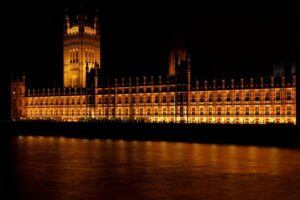Introduction
Demand-pull inflation occurs when there is an increase in the overall demand for goods and services in an economy, leading to a rise in prices. This type of inflation is driven by factors such as increased consumer spending, government expenditure, and investment. As demand outpaces the supply of goods and services, businesses respond by raising prices to maximize their profits. In this article, we will delve deeper into the causes and effects of demand-pull inflation.
Causes of Demand-Pull Inflation
Increased consumer spending: When consumers have more disposable income or access to credit, they tend to spend more on goods and services. This surge in consumer spending creates a higher demand for products, which can lead to an increase in prices.
Government expenditure: Government spending on infrastructure projects, social welfare programs, or defense can also contribute to demand-pull inflation. As the government injects money into the economy, it stimulates demand and puts upward pressure on prices.
Investment: Increased investment in businesses and industries can drive demand-pull inflation. When businesses invest in expanding their production capacity or introducing new technologies, it creates a higher demand for resources and labor, leading to price increases.
Effects of Demand-Pull Inflation
Rising prices: The primary effect of demand-pull inflation is an increase in the general price level. As demand outstrips supply, businesses raise prices to maintain profitability. This erodes the purchasing power of consumers, as they need to spend more for the same goods and services.
Reduced purchasing power: With prices on the rise, consumers may find it harder to afford the same quantity of goods and services. This can lead to a decrease in their overall standard of living and a decline in their purchasing power.
Income redistribution: Demand-pull inflation can also result in income redistribution. Those who own assets that appreciate in value during inflation, such as real estate or stocks, may benefit. However, individuals with fixed incomes or those who rely on wages may experience a decline in their purchasing power.
Controlling Demand-Pull Inflation
To control demand-pull inflation, central banks and governments employ various measures:
Monetary policy: Central banks can increase interest rates to reduce borrowing and spending, thereby cooling down demand. Additionally, they can tighten the money supply by selling government securities, which reduces the amount of money available for lending and spending.
Fiscal policy: Governments can use fiscal measures such as increasing taxes or reducing government spending to curb demand. These actions aim to reduce the amount of money flowing into the economy and dampen consumer spending.
Conclusion
Demand-pull inflation occurs when there is an increase in overall demand for goods and services, leading to rising prices. Factors such as increased consumer spending, government expenditure, and investment can drive this type of inflation. The effects of demand-pull inflation include rising prices, reduced purchasing power, and income redistribution. To control demand-pull inflation, central banks and governments implement monetary and fiscal policies aimed at reducing demand.
References
– Federal Reserve Bank of St. Louis: research.stlouisfed.org
– Investopedia: www.investopedia.com
– Khan Academy: www.khanacademy.org






